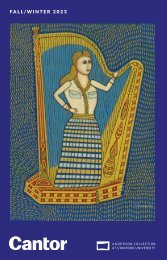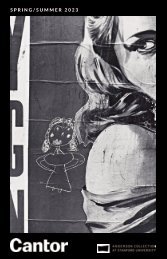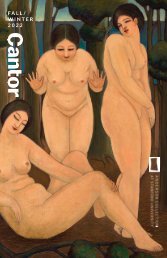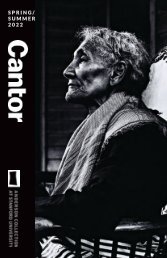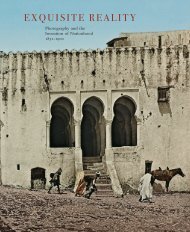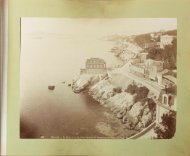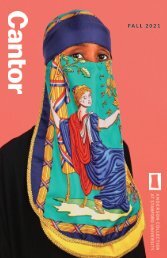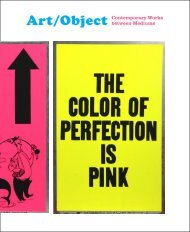Exhibition Catalog | Jacob Lawrence
Explore a gift of drawings, prints, and paintings by African American modernist Jacob Lawrence addressing Black history and civil rights, public life, faith, and creativity.
Explore a gift of drawings, prints, and paintings by African American modernist Jacob Lawrence addressing Black history and civil rights, public life, faith, and creativity.
Create successful ePaper yourself
Turn your PDF publications into a flip-book with our unique Google optimized e-Paper software.
gradually expanded. He recalled initially not feeling the need to “go outside the<br />
community except to an art gallery or a museum. Everything was right there.”⁷<br />
Essential to his “everything” was the Arthur Schomburg collection in the Division of<br />
Negro Literature, History, and Prints at the New York Public Library on 135th Street,<br />
where he voraciously researched black history. In 1940 <strong>Lawrence</strong> met José Clemente<br />
Orozco while the formidable muralist painted on site at the Museum of Modern Art.<br />
He respected Orozco’s forceful draftsmanship and expressive figures, as well as his<br />
commitment to addressing Mexico’s history of racial discrimination. <strong>Lawrence</strong> also<br />
took inspiration from artists who had influenced Orozco. He learned effective uses of<br />
the serial format from the great etcher of the Spanish Enlightenment, Francisco de<br />
Goya, and he credited the sensitive portrayals of the human condition rendered by<br />
French satirist and lithographer Honoré Daumier with influencing what he described<br />
as the “humanistic” element of his work.⁸<br />
While still in his twenties <strong>Lawrence</strong> earned fame and critical recognition<br />
for projects demonstrating his belief that “the Negro has been one of the great . . .<br />
focal points of this drama which we as Americans have experienced.”⁹ His brilliant<br />
portrayals of Frederick Douglass and Harriet Tubman, whom he painted in 1939<br />
and 1940, respectively, reflect his ability to both humanize and elevate the historical<br />
figures he had heard about as a child from the “black school teachers and black<br />
librarians” and the “street-corner orators” who taught him about history.¹⁰ <strong>Lawrence</strong><br />
revisited the subject of Tubman and the Underground Railroad in his series of paintings<br />
Harriet and the Promised Land (1967), which is represented in the Kayden gift<br />
by The Last Journey (fig. 8, cat. 9) and illuminated in this catalogue in an essay by<br />
James T. Campbell. In 1941 <strong>Lawrence</strong> completed one of his most famous works, the<br />
sixty-panel series The Migration of the Negro. He immediately followed it with twentytwo<br />
gouache paintings titled The Legend of John Brown, which illustrate the beliefs<br />
and deeds of the radical, white abolitionist with a spare, abstract style. The Kayden<br />
gift features the complete portfolio of twenty-two stunning silkscreen prints (cats.<br />
19–40) <strong>Lawrence</strong> made in 1978 after the John Brown paintings. In all of these serial<br />
narratives, the human form embodies the intentions and emotions of revolutionary<br />
figures from African American—and hence American—history. These works prove<br />
that the artist did not paint in the shadow of what W.E.B. Du Bois in 1903 had called<br />
“double-consciousness,” a paradigm in which the self is divided into a black part and<br />
an American part, and constantly pressured to choose between the two.¹¹ <strong>Lawrence</strong>’s<br />
13




